Quins’ renovations bode well for new season
Quins' renovations bode well for new season

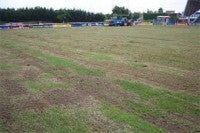
In June this year I decided to undertake most of the renovation work myself. Cost as always is a consideration, but more importantly I was able to control the quality and timing of the works far better.
So I started by contracting in Kestrel to do my fraize mowing, removing the majority of the surface vegetation. I had enjoyed one full season in charge at The Stoop, and the pitch was infested with Poa (annual meadow grass). I decided that the Koro machine was the best way of stripping away the weak grasses, but also to regain some better levels on the playing surfaces. This operation was performed in two directions. The Koro will remove slight undulations during its routine operation. However where there were more serious dips, a limited amount of grass was left in the depressions.
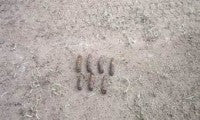
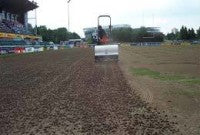
The chain harrow is a useful tool for end of season renovations, it is strong enough to break up the cores and work the combined dressings into the core holes. It will also help produce reasonable surface levels, if used correctly.
With a reasonable level and tilth across the pitch, Kestrel aerated the pitch using The Groundbreaker. This linear aerator cut vertical slits in the pitch, shattering the lower root zone. The benefits of aeration have already been outlined above, but this type of machine allows you to penetrate to a much greater depth, without too much surface disturbance and I wanted a change from the verti-drainer action as later on I had in mind to verti-drain after the sevens competition at the beginning of August to which I did.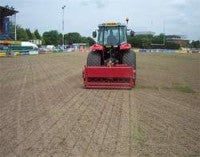
Seeding the pitch in three directions followed the aerating. I used a disc seeder that enabled me to drill the seed into the surface. In total I applied 500kg of mixed Rye grass seed. This was a mix that I had chosen for its wear tolerance, colour, leaf density and disease resistance. It is always important not to skimp on the quality of the seed that you use. A good quality seed will always provide a better playing surface, lasting far longer into the season, making your life easier. With the seed drilled safely in the surface, I applied an appropriate fertiliser to promote seed establishment and encourage a healthy sward. I used 360kg of 10:15:10 NPK analysis.

At the beginning of September it was dry, warm and sunny but even though my drainage runs were showing, drying out and under stress - to which I was keeping a very careful and watchful eye on these, my idea was to force the roots down. It would be interesting if any other Groundsmen are and were in the same situation. I have seen some disease on the pitch but just kept an eye on it, preferring to feed and therefore strengthen the grasses ability to fight off the problem. But in the end admitted to defeat and sprayed on Rimidin for Fusarium at the end of August which now has eradicated the disease for the time being.
for the time being.
At the end of July I had my first games on the pitch, eight weeks after seeding, a one-day sevens competition of 16 participating teams. Less than a week later, two days of competitive international club rugby sevens, 16 teams playing over 16 hours of rugby in fourteen-minute games!
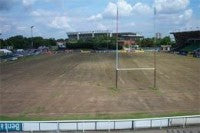 I then mowed and lightly rolled the grass prior to verti-draining, which I did myself - hiring the tractor and verti-drainer from the RFU, over the road at Twickenham.
I then mowed and lightly rolled the grass prior to verti-draining, which I did myself - hiring the tractor and verti-drainer from the RFU, over the road at Twickenham.
I was very happy with how the pitch had performed and the repair work I did after the sevens' competitions. At this point I felt root growth was good and continuing on its way down, little did we know what weather was to come in August.
Up until now, I have had 14 hours of training/team runs, 7 games and 3 hours of community rugby (prior to the first team games), basically a game every week. In September and October there are 6 games with Heineken Premiership match, unfortunately we lost 10-18, but this had nothing to do with the pitch!
Premiership match, unfortunately we lost 10-18, but this had nothing to do with the pitch!
The pitch is performing very well; the young Rye grasses are much stronger and better rooted than the existing Poa. Overall the sward is thick and disease free but in the next week or so I will be applying a fertiliser dressing, probably Scott's Invigorator, other works will include applying a root growth dressing and regular aeration to the playing surface when I can fit operations in between the games.
During the summer I have undertaken a regular verti-cutting regime, aimed at removing debris in the sward, encouraging the grass to grow vertically and removing any Poa seed heads.
On a separate note, this summer has also seen the construction of the new north stand, and in the New Year the whole of the west side of the ground will be completely demolished (subject to planning permission). In its place will be built a similar styled development to our existing east stand.
Busy times ahead then on and off the field.
